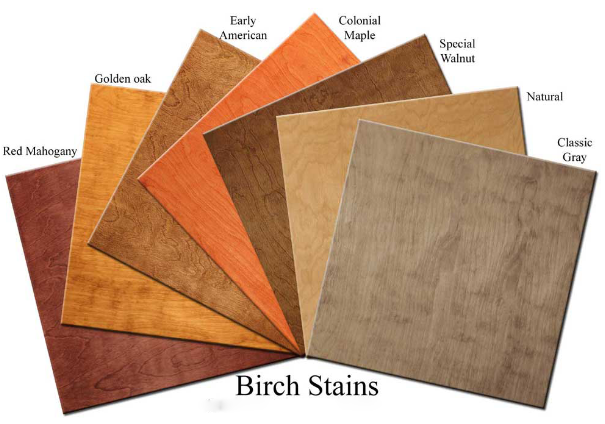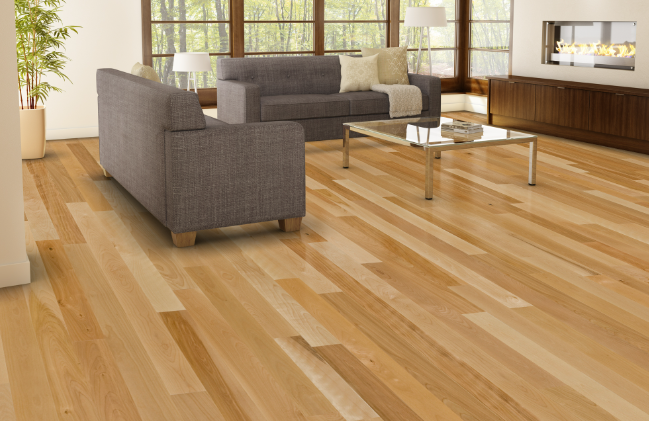Embracing Nature's Palette: The Captivating Colors of Birch Wood
Birch wood is known for its versatile nature and attractive appearance, making it a popular choice in various woodworking projects. Whether you're working on furniture, flooring, or decorative items, understanding the natural color of birch wood is essential. In this article, we will delve into the captivating colors of birch wood, exploring its variations, factors influencing its color, and techniques to enhance its natural beauty.

Birch stains
I. Overview of Birch Wood
1. Introduction to Birch Wood
Birch wood is derived from birch trees, which belong to the Betula genus. It is a hardwood that is widely recognized for its strength, durability, and smooth grain pattern. Birch wood is valued for its versatility, making it suitable for both interior and exterior applications.
2. Varieties of Birch Trees
There are several species of birch trees, each with its unique characteristics and distribution. Common birch tree species include the white birch (Betula papyrifera) and the yellow birch (Betula alleghaniensis). These species differ in terms of their growth habits, bark appearance, and wood color.
II. Understanding Birch Wood Color
1. Natural Color of Birch Wood
Birch wood typically exhibits a light and bright color palette. The heartwood of birch wood ranges from pale to creamy white, while the sapwood appears lighter in color. In some cases, birch wood may exhibit light brown to golden tones, adding warmth to its overall appearance.
2. Factors Influencing Birch Wood Color
The color of birch wood is influenced by various factors, including the age of the tree and its growth rate. Younger birch trees tend to have lighter-colored wood, while older trees may exhibit richer and darker tones. Additionally, environmental factors such as sunlight exposure and soil conditions can impact the color of birch wood.
III. Variations in Birch Wood Color
1. White Birch (Betula papyrifera)
White birch is known for its pale and almost pure white color. However, it can also exhibit slight variations, ranging from creamy white to light yellowish tones. White birch wood is commonly used in furniture, cabinetry, and decorative items, offering a clean and elegant aesthetic.
2. Yellow Birch (Betula alleghaniensis)
Yellow birch features a warm and golden hue, often with reddish-brown undertones. The color of yellow birch wood can vary from light golden to deep amber, adding a touch of warmth and richness to woodworking projects. It is highly valued for its natural beauty and is often used in flooring, paneling, and fine furniture.
IV. Enhancing Birch Wood Color
1. Stains and Finishes
To further enhance the color and appearance of birch wood, stains and finishes can be applied. Stains offer a wide range of color options, allowing you to achieve desired shades while still preserving the natural grain of the wood. Finishes such as lacquer or varnish not only protect the wood but also enhance its color and provide a glossy or matte appearance.
2. Natural Aging and Patina
Over time, birch wood undergoes natural aging, which can result in subtle changes in color. The wood may develop a patina, which is a natural darkening or mellowing of the color. Embracing the natural aging process can add character and depth to birch wood, making it even more visually appealing.

Floor use birch wood
Birch wood captivates with its natural beauty and appealing color palette. Its pale to creamy white hues, as well as light brown to golden tones, make it a versatile and sought-after material in woodworking. Understanding the variations in color, factors influencing its appearance, and techniques for enhancing its natural beauty allow craftsmen and enthusiasts to make the most of birch wood's aesthetic qualities. So, whether you're working on a furniture project, flooring installation, or decorative item, embracing the captivating colors of birch wood will surely elevate the visual appeal of your creations.